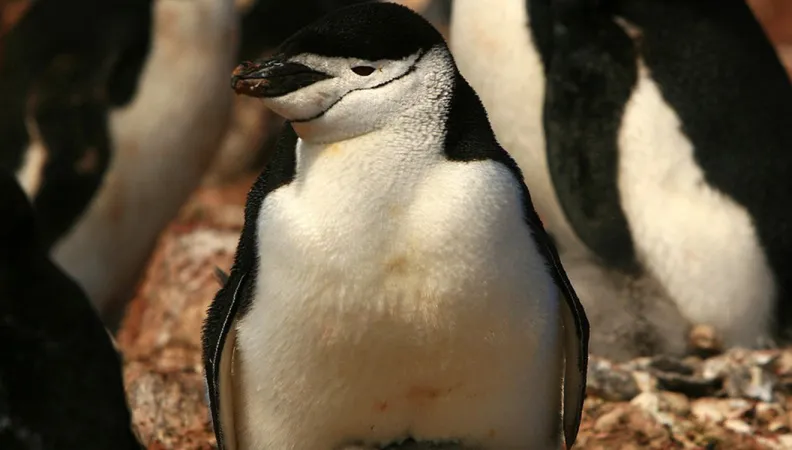Share the page
Oceans: A New System to Protect Marine Biodiversity in Argentina - and Beyond
Published on

With 5,000 km of coastline, Argentina is working towards establishing, for the first time, a national system to monitor the abundant coastal and marine biodiversity around the country and beyond. By keeping a closer eye on threats to marine wildlife, officials will be better placed to protect the hundreds of species that belong to the region’s ecosystem. We interview Dr. Juan Emilio Sala, who coordinated some 50 experts in Marine Sciences to advise Argentina’s Government.
Dr. Juan Emilio Sala is Executive Coordinator of the Interministerial Committee for the Pampa Azul Initiative at Argentina’s Ministry of Science, Technology and Innovation.
Why does Argentina need a new system to monitor its marine biodiversity?
Juan Emilio Sala: Argentina has been monitoring its coastal-marine biodiversity in a disaggregated manner, which has not been systematized by any national policy. And monitoring has depended on the good will of individual research groups and the vicissitudes of funding availability.
So we’re attempting to create some order at the national level, which allows for the systematization, continuity over time, and management of the priorities and protocols to follow.
One of the challenges for Argentina is to have its ecosystem services well mapped. Argentina doesn’t have a good mapping or spatial characterization of the coastal-marine ecosystem. And with this indicator monitoring system it will be possible, because what we want is for ecosystem services to be one of the indicators, due to their ability to integrate both the biological or biophysical, and social aspects.
Further reading: 5 Reasons to (Finally) Take Care of the Oceans
For national policies to be established the Pampa Azul Initiative brings together the seven ministries with the greatest responsibility for the sea and the coast. It’s through this policy that we can establish a national system for monitoring coastal-marine biodiversity indicators in a systematic way.
After almost ten years of Pampa Azul's existence, and thanks to the support of AFD with a grant of $15,000, we can say that we are capable of starting this process of systematic monitoring of biodiversity.
Is it also a matter of political will?
Of course. It’s the first time that through a comprehensive and systemic public policy such as the Pampa Azul Initiative, the long-term monitoring of coastal-marine biodiversity is being discussed. Until now, monitoring was undertaken in a very dispersed manner. Some taxonomic groups or environments are monitored, while for others, we have nothing. Such monitoring is now being discussed at the national level to also comply with the international objectives assumed by our country, such as the United Nations Sustainable Development Goals.
Today, there is beginning to be an awareness among decision makers that it is not possible to continue living as though we are outside of nature. Scientists have known this for 30 years or more, but politics is lagging behind in that sense. So, today Argentina is undergoing a paradigm shift regarding the role of nature in sustaining life in general and productive practices in particular.
You have begun with a review of the literature. What are the best indicators to use to monitor wildlife in the oceans?
What emerges from the studies we have analyzed are such measures as the diversity, abundance, density and richness of species and ecosystems, as well as coverage.
For example, if I obtain the coverage, say of the macroalgae forests, I can calculate the coverage along the entire Argentine coast, and I already have a very strong indicator of how biodiverse our coast is going to be. Because with this I have the knowledge of where those forests are and how well represented they are, since they are very diverse; as well as the subtropical forests of the continent, something already observed by Charles Darwin.
Is Argentina taking note of best practices in other countries?
There are countries from the Global South that have been doing a lot of work on these issues, notably China, India and Mexico. These three countries in general and Mexico in particular, have clear methods to monitor biodiversity in a broad sense, incorporating the human or socio-economic dimension.
It’s also important to understand the social and human dimension that surrounds the coast and the sea. For example, in Mexico they not only monitor the status of the animals that inhabit the seabed, or the beaches, or the algae on the coasts. They also evaluate the problems experienced by the people who live there.
Further reading: "Blue Action Fund": A Major Player in the Protection of Marine Biodiversity
Social and human factors are drivers that can catapult the loss of biodiversity. In Argentina, we have problems such as pollution, similar to what they may have in Mexico. This made some of the works of those evaluated in this review give us some clues of where to go with the monitoring of the most contaminated areas by industry, for example.
So, one of the ideas that arises from this is coastal marine biodiversity can be monitored with a system for highly entrapped areas, where there is a lot of human activity and a lot of pollution. In port areas for example, where there are industries that release effluents into the sea and others, versus preserved and protected areas, which can act as control sites.
What is the next stage?
We are going to form subcommittees that will establish six to ten indicators according to which we’ll monitor the coasts and the open sea of the entire country. We’ll do that until the end of the year. We’ll also have to prepare for the creation of the National System of Coastal-Marine Biodiversity Indicators, a project worked on with the contribution of the AFD, and thus seek approval in the area of Pampa Azul. If that’s approved this year, the resources will be assigned so we can start monitoring next year, beginning perhaps with the pilot study of some sites, ideally next February or March.
From there we’ll establish the system incrementally, incorporating more indicators and more monitoring sites. The scientists who are participating are already surprised by the changes that are taking place in the political context on these matters, because we have been saying for at least 15 years, "this has to be done, and this has to be done," and it was never done. Suddenly things are starting to move and people are getting excited, and more people want to participate!
I’m happy and very excited that we are able to move forward with things that were once only written on paper, among Pampa Azul's objectives. Only now, we’re going to make it happen!
